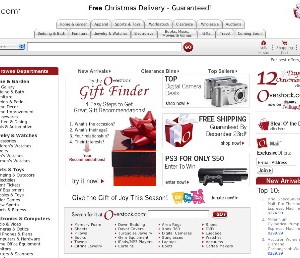
As the numbers attached to online shopping continue to rise, Internet retailers are getting more savvy with their use of consumer tracking technology. Unlike brick-and-mortar shoppers, online shoppers’ intentions, tastes and shopping habits are stored and saved for future reference. In the Cyber Shopping world this allows retailers from mom-and-pop shops to online leaders like Amazon.com Inc. to analyze this data to better hone offers and display merchandise to specific visitors. While this type of customizing is nothing new, the technology today is allowing e-commerce sites to tailor their content even more specifically. Some analysts are now estimating that up to half of all online retailers are now using promotional targeting methods on their sites.
Sites like Overstock.com will, in some instances, use geography to determine what items are displayed on the home page as a visitor logs in claiming winter clothing will be replaced with something else when a visitor from Florida clicks to the home page. They are also testing ideas with making various offers, like 5 percent discounts versus $5 off, to different customer segments based on factors like the type of Internet connection they use. In recent weeks, Overstock.com Inc. actually began displaying one of several thousand promotions – from free shipping offers to discounted merchandise – to different visitors based on some 40 attributes tied to the shopper’s session. These include the time of day, determined by the time zone indicated by a computer’s Internet address, as well as the shopper’s presumed gender. (The company says it can typically determine a shopper’s gender after about five to 10 clicks.)
We have also learned that many sites are examining keywords used on search engines such as Yahoo or Google to determine what offers are likely to be popular. One site, Delightful Deliveries Inc., a gift and gourmet retailer, told us they present different customers with offers based on what search term they used on Google or Yahoo to wind up at their site. For example, a visitor who came upon their site by using Google to search for “gift basket” could be offered a 5 percent discount, while someone who clicked through after searching for “Christmas cookies” will see a free-shipping deal instead.
It’s all about the different footprints consumers are leaving when they shop online and making sure the content speaks more directly to their tastes and shopping history.





